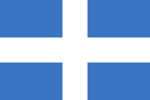Republic of Pannonia
This article refers to a nation which is currently in a state of inactivity. You can help make the article reflect that or ask on the talk page for further information. |
| Motto: Vivre puur vérité, liberté et pee' | |
| Anthem: Himne de l"année' tranqille' | |
 Pannonian claims in 2012 (one circle may indicate multiple provinces) | |
| Capital | Sirmie (PN1) |
| Largest city | Troysvilles (PN9) |
| Official languages | French (Pannonia), English, Hungarian |
| Demonym(s) | Pannonian |
| Government | Presidential Republic |
| Establishment | 11 Nov 2011 |
| Population | |
• (7 citizens + 73 nationals) census | 80 |
| Currency | Pannonian Florin (Floryn de Pannonie) |
| Time zone | (UTC), also GTZ |
The Republic of Pannonia (in Pannonian French: Républiqe de Pannonie; in Pannonian script: ) is a micronation founded on 11 November 2011 by B. N. Brunner, current president. It is a statecraft project aiming to establish and maintain a territorial presidential republic. Although the Republic of Pannonia had previously been non-territorial, it is now claiming small, unused (or reasonably abandoned) pieces of land in European macronations. It is located primarily in the United Kingdom and Hungary with some territories in Greece, Germany, Italy and Norway. Citizenship can be acquired on its website for free. The republic issues passports, secondary license plates and international ovals in the form of printable documents.
Etymology
Pannonia was an ancient province of the Empire. Although the micronation has no relation to the ancient Roman territory (except the fact that several Pannonian provinces are located in Hungary), it uses the same name translations (e.g. Pannonie and Pannónia). Moreover, the majority of the republic's territories (usually referred to as provinces) have names deriving from the names of ancient Pannonian cities and auxiliary forts, such as the capital Sirmie (from Sirmium), Savarie (from Savaria), Çélie (Celeia), Çertisse (from Certissa), Sérvine (from Serbinum or Servitium) and Scarbantie (Scarbantia).
In other languages
Since the Republic of Pannonia consists of a multilingual and intermacronational community, several translations of its name are in use. These names have all derived from the same Latin root and, therefore, can be considered very similar.
- French (Pannonia) - Républiqe de Pannonie, Pannonie
- Hungarian - Pannóniai Köztársaság, Pannónia
- French (France) - République de Pannonie, Pannonie
- Greek - Δημοκρατία της Παννονίας, Παννονία
- Italian - Repubblica Pannonica, Pannonia
- Esperanto - Respubliko Panonio, Panonio
History
Establishment
The Republic of Pannonia was established at 16:00 (UTC) on 11 November 2011. The date of the official establishment was decided prior to the event, which could take place on the numerologically special day of 11–11–11. The event, which was held in the president's house, consisted of the introduction of the state's flag, coat of arms and national anthem. The date has become the national day of Pannonia.
Non-territorial republic (2011)
From 11 November (date of official foundation) to 31 December 2011, the Republic of Pannonia did not have any claim for physical territory. This was because the government was still in need of development and there was hardly any interest in the project.
Territorial republic (2012)
From 1 January 2012 Pannonia claims physical territory in Europe. According to the president's first resolution passed on 25 December 2012, the Pannonian Registry of Territory (Rejistre du Territoyre Pannoniqe, also RTP) claims small pieces of land that are not in use and proclaims them 'provinces' of the Republic of Pannonia.
Revision of Territorial Claims (2013)
On 5 April 2013, an official resolution was passed by the Presidency of Pannonia and the RTP, concerning the territories claimed by the republic. The revision of territorial claims stated that Savarie (PN2) and Scarbantie (PN8) will be relocated while maintaining their cultural aspects, and that the areas covered by Çélie (PN3) and Sérvine (PN6) will be extended. Furthermore, the resolution included the establishment of five new provinces, namely Acumynçe, Marsonie, Yntreçise, Arbone and Réne.
Provinces
The territory of Pannonia is divided into provinces, since it consists of separate pieces of land. In case the government claims more territory, the new area will automatically form its own province. Provinces are usually enclaves of different macronations with their own flag and area code, however they all belong to the Republic of Pannonia and cannot be governed separately. Provinces are registered by the Rejistre du Territoyre Pannoniqe (Pannonian Registry of Territory, RTP for short) and the Presidency of Pannonia.
| Provinces of the Republic of Pannonia | |||||||
|---|---|---|---|---|---|---|---|
| Codes[1] | Flag | Name (French) | Macronational location | Image | Population of citizens [2] | Population of nationals [3] | Date claimed |
| PN1 SM |

|
Sirmie | Peterborough, UK | not available | 1 (2012) | 3 (2011) | 1 Jan 2012 |
| PN2 SV |

|
Savarie | Eye Green Natural Reserve, Eye Green, UK [4] | photo | 1 (2012) | 0 (2011) | 1 Jan 2012 |
| PN3 CE |

|
Çélie | Nene Park, Peterborough, UK | photo | 1 (2012) | 0 (2011) | 1 Jan 2012 |
| PN4 MA |

|
Matriçe | Dánszentmiklós, Hungary | not available | 0 (2012) | 2 (2011) | 1 Jan 2012 |
| PN5 CT |

|
Çertisse | Malom utca, Hort, Hungary | photo | 1 (2012) | 0 (2011) | 1 Jan 2012 |
| PN6 SE |

|
Sérvine | Dovedale, Peak District, UK | photo | 1 (2012) | 0 (2011) | 1 Jan 2012 |
| PN7 IT |

|
Įle de Trinité | Sástó, Gyöngyös, Hungary | photo | 0 (2012) | 0 (2011) | 1 Jan 2012 |
| PN8 SC |

|
Scarbantie | Mátrafüred, Hungary [5] | photo | 1 (2012) | 0 (2011) | 1 Jan 2012 |
| PN9 TV |

|
Troysvilles | Monopylo-Trilofo-Giannochori, Nestorio, Greece | photo | 1 (2012) | 68 (2001) [6] | 1 Jan 2012 |
| PN10 AC |

|
Acumynçe | Loch Lomond and the Trossachs National Park, UK | photo | 0 (2013) | 0 (2013) | 5 Apr 2013 |
| PN11 MS |

|
Marsonie | Dunure, UK | photo | 0 (2013) | 0 (2013) | 5 Apr 2013 |
| PN12 YN |

|
Yntreçise | Castelmola, Sicily, Italy | photo | 0 (2013) | 0 (2013) | 5 Apr 2013 |
| PN13 AR |

|
Arbone | Laber, Ammergau Alps, Bavaria, Germany | photo | 0 (2013) | 0 (2013) | 5 Apr 2013 |
| PN14 RE |

|
Réne | Reine, Moskenesøya, Lofoten, Norway | photo | 0 (2013) | 0 (2013) | 5 Apr 2013 |
Government and politics
Due to the extremely low population and the small size of claimed territory, the Republic of Pannonia is currently run by a basic presidential system, allowing the president to be in charge of both the government and the judicial system. Meanwhile, the president's decisions are highly influenced by the citizens.
Presidency
The Présidynçe de Pannonie (also Presidency of Pannonia) is the name given to the government of the Republic of Pannonia. The committee consists of three members from three European macronations:
| Title | Name | Province[7] | Macronation |
|---|---|---|---|
| President | B. N. Brunner | ||
| Vice-President | Ádám Szatmári | ||
| Secretary | Emiliano Mancini |
Ministries and agencies
The Republic of Pannonia is run by the collaboration of a number of ministries and official internal organisations (agencies). In 2013, new ministries are going to be established.
| Logo | Original name | English name | Responsibilities | Minister/CEO | Headquarters | Website |
|---|---|---|---|---|---|---|
| Présidynçe de Pannonie | Presidency of Pannonia | General issues, government | B. N. Brunner | Official website | ||
| Ministēre des᷇ Affeer' Etranjēr' (MAE) | Ministry of Foreign Affairs | Foreign relations, citizenships | B. N. Brunner | Official website | ||
| Assoçiațion des Média' de Pannonie (AMP) | Pannonian Media Association | Publications, website, TV-Radio | Emiliano Mancini[8] | Official website | ||
| Poliçe Naționale de Pannonie | National Police of Pannonia | Law and order, citizenships | not available | not available | ||
| Banqe de Pannonie | Bank of Pannonia (not in use) | Finance | Ádám Szatmári | Official website | ||
| Rejistre du Territoyre Pannoniqe (RTP) | Pannonian Registry of Territory | Registry of provinces | not available | not available | ||
| Comité Culturel de Pannonie | Pannonian Cultural Committee | Development of Pannonian culture | not available | not available | ||
| Assoçiațion d'Éducațion de Pannonie (AEP) | Pannonian Educational Association | Alternative education system | not available | Official website | ||
| Pannonian Airlines | Pannonian Airlines | Intermediary aviation services | not available | not available |
Foreign relations
As a young micronation, the Republic of Pannonia has a little number of intermicronational relations and has only been recognised by a few micronations. Due to the little territory and the low population, the physical exchange of ambassadors is impossible. The Ministry of Foreign Affairs (Ministēre des᷇ Affeer' Etranjēr', also MAE) is the agency being responsible for the state's diplomatic relations with other nations, and also for issuing citizenships (see below).
Automatically recognised nations
These macro- and micronations were automatically recognised by the Republic of Pannonia on 18 November 2011 as part of the MAE's "diplomatic preparation" actions:
| All United Nations members | |
| Republic of Kosovo | |
| Principality of Seborga | |
| Principality of Sealand | |
| Republic of Molossia | |
| Federal Republic of St. Charlie |
Mutual recognitions with other micronations
| Flag | Nation | Requester | Date accepted | Formality | Document |
|---|---|---|---|---|---|
| Armlania | Armlania | 30 November 2011 | informal | private | |
| Kadmurian Empire | Kadmuria | 24 November 2011 | formal | treaty | |
| Republic of Lostisland | Lostisland | 27 December 2011 | formal | treaty |
Diplomatic relations with other micronations
These micronations possess an embassy in the Republic of Pannonia and work collaboratively with the Pannonian government.
| Flag | Nation | Requester | Date accepted | Formality |
|---|---|---|---|---|
| Armlania | Armlania | 30 November 2011 | informal | |
| Kadmurian Empire[9] | Kadmuria | 24 December 2011 | formal | |
| Republic of Lostisland | Lostisland | 27 December 2011 | formal | |
| Republic of Freedomia | Pannonia | 17 May 2012 | formal |
Diplomatic missions
Embassies and consulates of the Republic of Pannonia currently operate in the following macro- and micronations:
| Flag | Nation | Representative[10] | Mission |
|---|---|---|---|
| United Kingdom | B. N. Brunner | non-resident | |
| w:Hungary Hungary | Ádám Szatmári | resident | |
| Italy | Emiliano Mancini | resident | |
| Lostisland | B. N. Brunner | non-resident |
The embassies and consulates of the Republic of Pannonia which operate in the states listed above are the followings:
| Emblem | Name of institution | Location |
|---|---|---|

|
Embassy and Consulate of the Republic of Pannonia in the United Kingdom | |

|
Embassy and Consulate of the Republic of Pannonia in Hungary | |

|
Embassy and Consulate of the Republic of Pannonia in Italy | |

|
Virtual Embassy of the Republic of Pannonia in the Republic of Lostisland |
Memberships
Pannonia is a member of the following intermicronational organisations:
| Logo | Organisation | Date requested | Date accepted | Status |
|---|---|---|---|---|
| Inter-Micronational Treaty Organization (IMTO)[11] | 3 January 2012 | 8 January 2012 | member | |
| League of Countries | 13 March 2012 | 14 March 2012 | member | |
| Union Against Micronational War (UAMW) | 12 November 2011 | 12 November 2011 | member | |
| European Community of Micronations | 12 November 2011 | 12 November 2011 | member | |
| Anti-Poverty Micronational Union (APMU) | 19 November 2011 | 19 November 2011 | member | |
| Organisation of Active Micronations (OAM) | 21 November 2011 | (dissolved)[12] | applicant |
Culture

The culture of the Republic of Pannonia is highly influenced by Hungarian and Italian cultures. With regard to languages, the culture of Pannonia has some influence from French and British cultures as well. Culture is developed by the Comité Culturel de Pannonie (Pannonian Cultural Committee), which aims to create an in depth culture for the community of Pannonia through collaboration.
Cuisine
The national dish of Pannonia is garlic toast with dandelion salad (also called peen grillé ā l"eel with salade de pissynlit' ). It originates from the area of Troysvilles province (PN9). On special occasions, several types of cheese are served with olives and garlic. According to the tradition, each participant must eat at least a small portion of the special starter, since it has symbolic meaning.
Beliefs and ethnicity
Although the majority of the population is either Christian or Jewish, the Republic of Pannonia has no restrictions regarding religion. The territory of Pannonia contains two Greek orthodox churches (both in Troysvilles), which are currently used by nationals only. Pannonia provides all citizens the right to practise their religion. A high majority of the current population of Pannonia is white in ethnicity, most from Central and Southern Europe (Hungary, Italy and Greece), and North America (United States).
National holidays
Because Pannonia claims territories in three countries and is influenced by at least four different European cultures, the Presidency and the Comité Culturel de Pannonie have established a unique list of national holidays, consisting of dates of national or religious celebrations on which Pannonian citizens are not obligated to work. The latter, due to the lack of state religion, refers to all alternative religious celebrations of a certain season. Therefore, citizens may have the ability to choose the appropriate celebration with regards to their religion.
| Date | Holiday | Note |
|---|---|---|
| 1 January | Beginning of New Year | Traditional feasts |
| 27 January | Holocaust Memorial Day (Juurnée Commémorative de l"Olocooste) | Also a general remembrance day |
| 5 February | Constitution Day (Juur de la constituțion) | Celebration of the national constitution |
| 15 March | Day of Liberty (Juur de Liberté) | Originally celebrates the Hungarian Revolution of 1848, used for general purpose |
| 16 June | Family Day (Juurnée de la Famille) | Commemorates the death of István Brunner, encourages families to spend a day together |
| 2 November | All Souls Day (Juur des mort') | General remembrance day, not necessarily religious |
| 11 November | Independence Day (Juur de l"Indépendynçe) | Anniversary of Pannonia's foundation |
| 8–16 December | Hanukkah (Jewish) | Religious celebration |
| 24–25 December | Christmas (Christian) | Religious celebration, dates different to international |
| 31 December | New Year's Eve | Celebrates the end of the year, not the beginning of the new one |
Languages

The Republic of Pannonia has three official languages: English, French and Hungarian. English is used for international communication, French is the official spoken language of the state and Hungarian is considered official due to its wide use in many provinces. Official documents, however, must be published in English and French.
Pannonian French (also referred to as Pannonian language or "françees pannoniqe") is a version of the French language, written in two different scripts. Originally, Pannonian French was written using a slightly modified Latin alphabet, while - since 2012 - a unique writing system is in use. The following samples show the differences between original and Pannonian French (Latin alphabet):
First article of the Universal Declaration of Human Rights:
French (Pannonia): Tuu' les᷇ ętre' umain' neessynt libre' et᷇ égoo yn diŋité et᷇ yn droyt'. Il' sont duué' de reeson et de consçiynçe et doyvynt ajir les᷇ yn' ynver' les᷇ ootre' dans᷇ yn esprit de fraternité.
French: Tous les êtres humains naissent libres et égaux en dignité et en droits. Ils sont doués de raison et de conscience et doivent agir les uns envers les autres dans un esprit de fraternité.
English: All human beings are born free and equal in dignity and rights. They are endowed with reason and conscience and should act towards one another in a spirit of brotherhood.
Hungarian: Minden emberi lény szabadon születik és egyenlő méltósága és joga van. Az emberek, ésszel és lelkiismerettel bírván, egymással szemben testvéri szellemben kell hogy viseltessenek.
The Tower of Bible (Genesis 11: 1–9):
French (Pannonia):
Alors tuute la terre aveet᷇ yn męme lyngaje, et une męme parole.
Mees il' arriva q"étynt partis d"Oriynt, il' truuvērynt᷇ une campaŋe oo pees de Sinhar, uū il' abitērynt.
Et il' se dirynt l"yn ā l"ootre: Or ça, feesons des briqe', et les cuison' trēs biyn oo feu. Il' eurynt donc des briqe' oo lieu de pierre', et le bitume leur fut oo lieu de mortier.
Puis il' dirynt: Or ça, bątissons-nuus une ville, et une tuur de laqelle le sommet soyt jusq"oo çieu'; et acqérons-nuus de la réputaţion, de peur qe nuus ne soions dispersés sur tuute la terre.
Alors l"Eternel dit desçendit puur voyr la ville et la tuur qe les fil' des᷇ omme' bątisseeynt.
Et l"Eternel dit : Voyçi, çe n"est q"yn seul et męme peuple, il's᷇ ont yn męme lyngaje, et il' commyncynt ā traveeller; et meentenynt riyn ne les᷇ ympęshera d"exécuter çe q"i's᷇ ont projeté.
Or ça, desçendons, et confondons lā leur lyngaje, afyn q"il' n"yntyndynt poynt le lyngaje l"yn de l"ootre.
Eensi l"Eternel les dispersa de lā par tuute la terre, et il' çēsserynt de bątir la ville.
Ç"est puurqoy son nom fut appelé Babel; car l"Eternel i confondit le lyngaje de tuute la terre, et de lā il les dispersa sur tuute la terre.
French (France):
Alors toute la terre avait un même langage, et une même parole.
Mais il arriva qu'étant partis d'Orient, ils trouvèrent une campagne au pays de Sinhar, où ils habitèrent.
Et ils se dirent l'un à l'autre: Or ça, faisons des briques, et les cuisons très bien au feu. Ils eurent donc des briques au lieu de pierres, et le bitume leur fut au lieu de mortier.
Puis ils dirent: Or ça, bâtissons-nous une ville, et une tour de laquelle le sommet soit jusqu'aux cieux; et acquérons-nous de la réputation, de peur que nous ne soyons dispersés sur toute la terre.
Alors l'Eternel descendit pour voir la ville et la tour que les fils des hommes bâtissaient.
Et l'Eternel dit : Voici, ce n'est qu'un seul et même peuple, ils ont un même langage, et ils commencent à travailler; et maintenant rien ne les empêchera d'exécuter ce qu'ils ont projeté.
Or ça, descendons, et confondons là leur langage, afin qu'ils n'entendent point le langage l'un de l'autre.
Ainsi l'Eternel les dispersa de là par toute la terre, et ils cessèrent de bâtir la ville.
C'est pourquoi son nom fut appelé Babel; car l'Eternel y confondit le langage de toute la terre, et de là il les dispersa sur toute la terre.
Citizenship
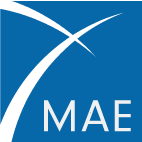
Citizenships can be acquired on the state's official website for free by everybody with a macronational citizenship and an understanding of the concept of micronationalism. The Republic of Pannonia has much to offer to new citizens. Some of these include:
- Intermicronational passport (issued by the National Police of Pannonia)
- Virtual bank account (by Banqe de Pannonie)
- Secondary license plate for vehicles (to be placed in window or below original plate, printable for free or purchasable online, issued by the National Police of Pannonia)
- International 'PN' ovals (printable)
Pannonian citizenships are issued with the assistance of three of the main Pannonian organisations. The Ministry of Foreign Affairs (Ministēre des᷇ Affeer' Etranjēr', also MAE) is responsible for most of the work, although official documents are produced by the National Police of Pannonia (Poliçe Naționale de Pannonie). Online requests are received and analysed by the Pannonian Media Association (Assoçiațion des Média' de Pannonie, AMP for short).

According to the most significant governmental decision, the Resolution of Regional Representation (passed in January 2012 by the Presidency), each new citizen must be automatically assigned to one of the state's provinces. The law's purpose is to ensure that the semi-annual Pannonian population count (or census) is reliable, although it is also useful as a promotion of cultural diversity among citizens. On the other hand, provinces have no right for self-government and all decisions are made by the Présidynçe de Pannonie. Citizens reserve the right to change the province they officially represent to an other one in the framework of a census, regardless of whether they intend to change it from their automatically chosen province or a province that they had previously selected themselves.
In order for the Republic of Pannonia to accept an application for naturalisation, the applicant must be a citizen of at least one macronation that is recognised by Pannonia. According to the national population count of June 2012, the citizens of Pannonia are citizens of the following macronations:
| Flag | Macronation | Number of citizens |
|---|---|---|
| Hungary | 4 (75% resident) | |
| Italy | 1 (100% resident) | |
| United States | 2 (50% resident) |
Transport

Although the Republic of Pannonia claims small pieces of land with hardly any roads and no transport services, all official citizens are eligible for unique second-level license plates. Moreover, printable international 'PN' ovals may be placed on vehicles of official citizens to show their Pannonian citizenship, unless their country's (macronation's) law does not allow it.
License plates
June 2012 - present
| Sample | Name | Usage | Description |
|---|---|---|---|
| Secondary plate for cars and motorbikes (A-type) | Used by all registered cars (and motorbikes). Issued in the form of adhesive stickers to be placed on the front and back windows of cars or the back of motorbikes. | Pannonian standard style (light blue background, white letters and symbol, rectangle shape). Pattern of code: PN00XX (PN = Pannonia; two numbers; two-letter code of the province represented by the owner, according to the Resolution of Regional Representation, January 2012) - Therefore, PN12SM = Pannonia; vehicle number 12, Sirmie. | |
| Primary or secondary plate for mopeds (C-type) | Used by all registered mopeds, motorised bicycles etc. Issued in the form of adhesive stickers or plastic plates to be placed on the back (and optionally the front) of the vehicles. | Pannonian standard style (white background, light blue letters and symbol, rectangle shape). Pattern of code: PN00XX (PN = Pannonia; two numbers; two-letter code of the province represented by the owner, according to the Resolution of Regional Representation, January 2012) - Therefore, PN23SE = Pannonia; vehicle number 23, Sérvine. | |
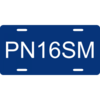  |
Bicycle plate (B-type), Sirmie and Troysvilles editions [13] | Used by all bicycles, tricycles etc. (including electric ones). Issued in the form of plastic plates to be placed on the back (and optionally the front) of the vehicles. | Pannonian regional style (white letters, background colour that represents a province, rounded rectangle shape). Pattern of code: PN00XX (PN = Pannonia; two numbers; two-letter code of the province represented by the owner, according to the Resolution of Regional Representation, January 2012) - Therefore, PN16SM = Pannonia; vehicle number 16, Sirmie. |
November 2011 - June 2012
| Sample | Name | Usage | Description |
|---|---|---|---|
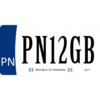 |
Residential front plate (RES-F) | Used by all vehicles that have been registered in Pannonia, are not in use outside of the territory and are not eligible for special license plates. | White background, black font. Cobalt blue, curved band on the left hand side with the white letters 'PN' (unofficial). Below the code: the title "Republic of Pannonia" between two flags and the year of issue. Pattern of code: PN00XX (PN = Pannonia; two numbers; owner's macronational citizensip) - Therefore, PN12GB = Pannonia; vehicle number 12, Great Britain. |
 |
Residential rear plate (RES-R) | Used at the same time with residential front plate (RES-F). | Yellow background, black font. Cobalt blue, curved band on the left hand side with the white letters 'PN' (unofficial). Below the code: the title "Republic of Pannonia" between two flags and the year of issue. Pattern of code: PN00XX (PN = Pannonia; two numbers*; owner's macronational citizensip) [14] |
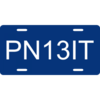 |
Citizens' second-level plate (CIT-2) | May be used by any official citizen as a secondary license plate (used at the same time with the real registration plates), in case the country's (macronation's) law allows it. Those who have previously acquired citizenship online may receive a printable version or purchase the original aluminium plate. | Cobalt blue background, white font. Pattern of code: PN00XX (PN = Pannonia; two numbers*; vehicle's original country of registration) - Therefore, PN13IT = Pannonia; vehicle number 13; Italy. |
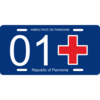 |
Ambulance and medical service (AMB-S) | Special plate issued by Poliçe Naționale de Pannonie. In the future, other types of special plates will be designed. | Cobalt blue background, white font. Code: two digit number on the left. The red cross symbolises that the vehicle belongs to the ambulance or any other medical service and does not indicate the non-existing "Pannonian Red Cross". Top: AMBULYNÇE DE PANNONIE = Pannonian Ambulance (part of National Police, not yet considered a separate organisation). Bottom: Republic of Pannonia. Note: Since no license plate can be issued with a code such as 01, the vehicle regisered under the number shown in the example would be officially recorded as AMB-01. |
Media

All types of media are controlled by a governmental organisation called Assoçiațion des Média' de Pannonie (Pannonian Media Association, also referred to as AMP). This association is in charge of publications, information published online, the official website and other sites (such as the forum), PTV Pannonia, available TV and radio stations etc.
Collaborative Broadcasting Project
On 23 December 2012 the AMP launched an intermicronational project, named 'Collaborative Broadcasting - Shared Internet TV'.[15] The aim was to establish a small union of Sixth World micronations to manage a shared internet TV station. According to the original plans, the members would share the broadcasting time equally and work together, so that the channel would be live most of the time and all member nations would have their own programmes. Due to the common failure of internet-based micronational television channels, there was a high amount of interest in the project from other micronations. The Collaborative Broadcasting Project was temporarily cancelled by the AMP in January 2012, although there is a possibility of it being revived by another participant or an intermicronational union.
Footnotes
- ↑ Area code (in bold), followed by two-letter code
- ↑ National population count of May 2012; results concur with those of the second unofficial census (December 2012)
- ↑ Residents of the territory who are not involved in micronational life
- ↑ Relocated from Central Park, Peterborough, UK in April 2013
- ↑ Relocated from Iskola utca, Hort, Hungary in April 2013
- ↑ http://www.mlahanas.de/Greece/Cities/Nestorio.html
- ↑ According to the Resolution of Regional Representation (January 2012)
- ↑ http://www.pn.neobase.hu/content/mancini-resigns-amp
- ↑ The Kadmurian Empire was known as the Republic of Kadmuria at the time of the agreement
- ↑ Either an ambassador or a consul
- ↑ http://republicoflostisland.com/news/imto_dissolved_after_the_withdrawal_of_lostisland/2012-04-12-187
- ↑ http://www.fra1.net/news/2011/12/29/oam-council-votes-in-favour-of-disbandment
- ↑ The National Police of Pannonia may issue 'B-type' license plates with the colour and two-letter code of any Pannonian province. The samples, therefore, do not represent all variations.
- ↑ Note: by law, the code must be identical to that of the front plate (RES-F).
- ↑ http://microwiki.org.uk/forum/showthread.php?tid=2121
See also
 Republic of Pannonia (hu/hc) |
Culture
Anthem of Pannonia • Motto of Pannonia • Pannonian French
President • Awards • Currency • Constitution • Declaration of Territorial Claims
Ministēre des᷇ Affeer' Etranjēr' • Banqe de Pannonie • Pannonian Airlines
External links Official website • PTV On-Demand • AMP YouTube channel • Official forum |
Provinces
|
|---|
 | Available conlangs:
• Хунгаро-Цирилл |
